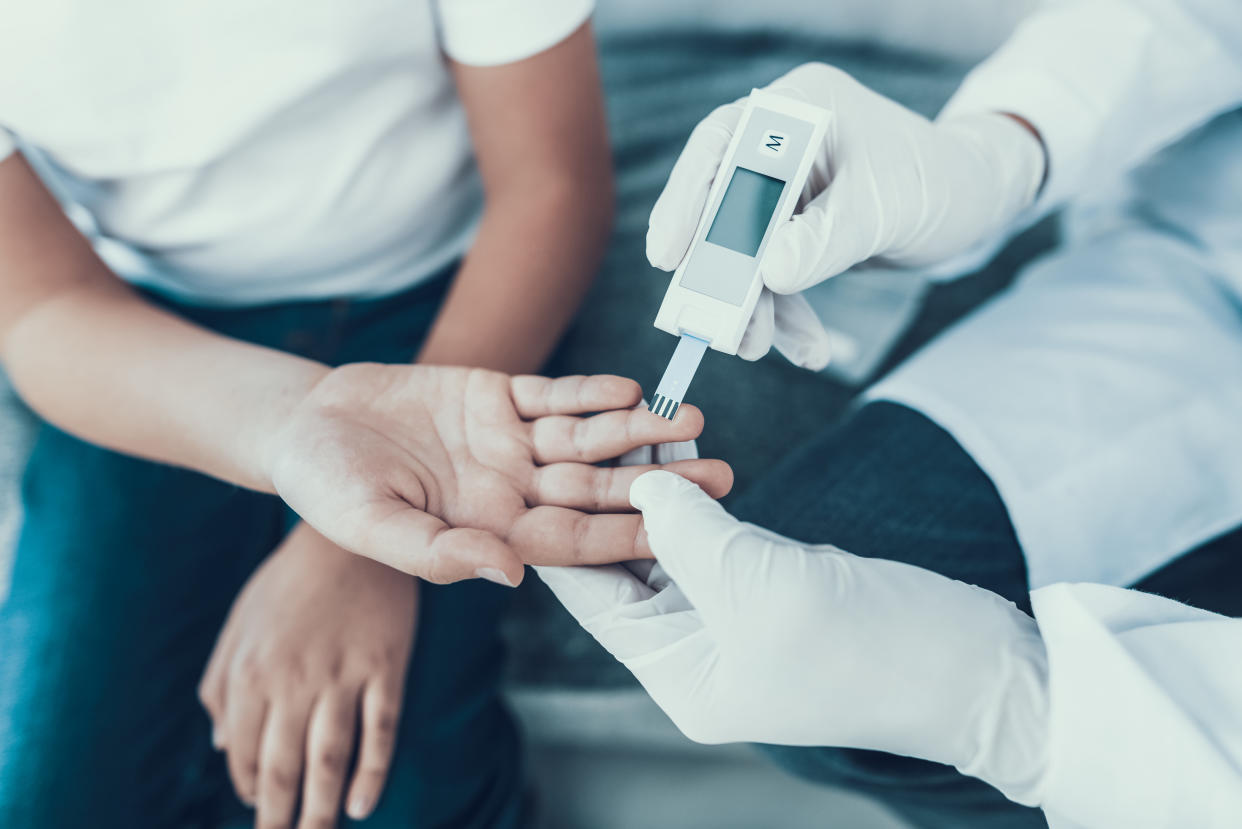Signs of adulthood type 2 diabetes 'visible in eight year olds'

Warning signs of adulthood type 2 diabetes can be spotted in children as young as eight, research suggests.
Scientists from the University of Bristol looked at blood samples from over 4,000 people aged eight, 16, 18 or 25.
Higher levels of “bad” cholesterol and inflammation were linked to the youngsters developing type 2 diabetes in later life.
The scientists hope better understanding how the disease unfolds will help doctors intervene earlier.
Read more: Diabetes: everything you need to know
Around 3.9 million people in the UK were living with a diabetes diagnosis in 2019, of whom 90% had type 2.
Type 1 diabetes comes about when the immune system mistakenly attacks the cells that produce the blood-sugar lowering hormone insulin.
In type 2 diabetes, the body does not produce enough insulin or does not respond to the hormone that is made.
Unlike type 1, type 2 diabetes is often associated with being overweight or inactive. Type 2 is also linked to having a family history of the condition.
To better understand how it develops, the Bristol scientists followed participants of the Children of the ‘90s health study.
Most of the youngsters did not have type 2 diabetes or any other chronic disease at the time.
Genetic information was combined with metabolomics, measuring small molecules in blood to identify patterns specific to the early stages of type 2 diabetes.
Read more: Type 2 diabetics '50% more likely to die prematurely'
Results, published in the journal Diabetes Care, flagged several warning signs.
Certain types of “good” cholesterol were reduced in the eight year olds who went on to become diabetic, while “bad” forms were raised.
Inflammation and some amino acids, the building blocks of proteins, were also elevated by ages 16 and 18.
These differences became more pronounced as the participants grew older.

“We knew diabetes doesn't develop overnight”, said lead author Dr Joshua Bell.
“What we didn't know is how early in life the first signs of disease activity become visible and what these early signs look like.
“Diabetes is most common in older age, but we see signs of disease susceptibility very early on; about 50 years before it's usually diagnosed.
“Knowing what these early signs look like widens our window of opportunity to intervene much earlier and stop diabetes before it becomes harmful.”
Read more: Two cups of filtered coffee a day ‘slashes the risk of type 2 diabetes’
The scientists stressed the participants were largely not diabetic at the time of the study, but showed warning signs.
“We're talking about the effects of susceptibility rather than of clinical disease itself,” said Dr Bell.
“This does not mean young people ‘already have adult diabetes’; these are subtle differences in the metabolism of young people who are more prone to developing it later in life.
“These findings help reveal the biology of how diabetes unfolds and what features may be targetable much earlier on to prevent the onset of disease and its complications.
“This is important because we know the harmful effects of blood glucose, such as on heart disease, are not exclusive to people with diagnosed diabetes, but extend to a smaller degree to much of the population”.


